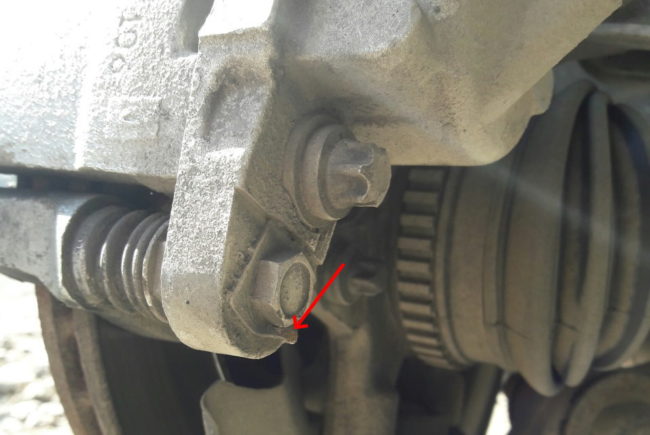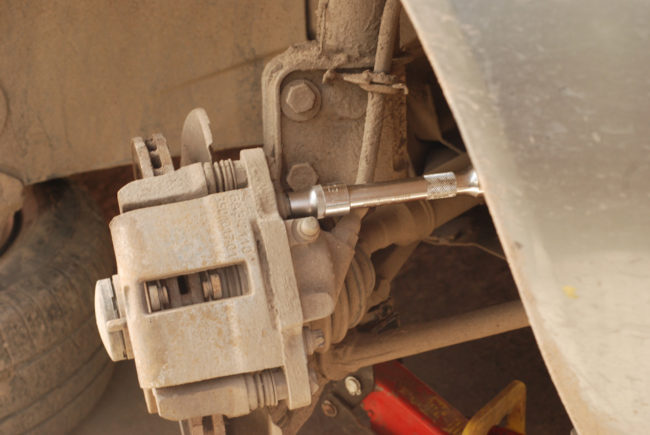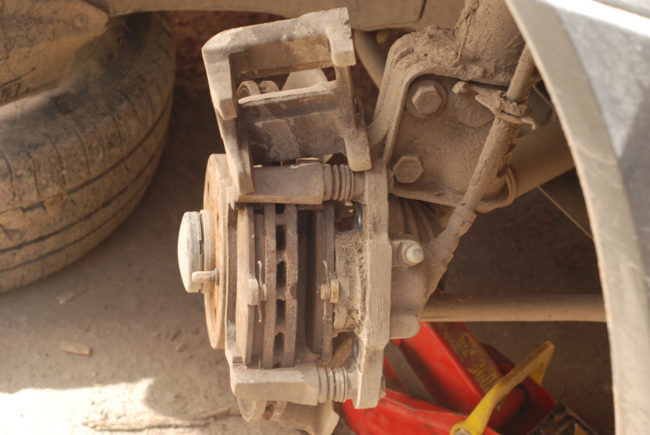Калина 2 замена передних тормозных колодок: Замена передних и задних тормозных колодок Лады Калины-2 своими руками + видео
Замена передних колодок | Лада калина 2
Вам будут нужны: отвертка с плоским лезвием, молоток, зубило, колючи «на 13» и «на 17»
Состояние колодок тормозных следует проверять при каждом техобслуживании.
Колодки тормозные нуждаются в замене в случае износа накладок (минимально допустимой толщиной накладок фрикционных являются 1,5 миллиметра), если накладки непрочно соединяются с основанием, при замасливании рабочих поверхностей, обнаружении сколов либо глубоких борозд.
Предупреждение
Колодки тормозные механизмов передних тормозных следует заменять исключительно в комплекте из 4 штук (по паре на каждую сторону).
1. Машину затормозить стояночным тормозом и под задние колеса установить противооткатные башмаки-упоры.
2. Проверить уровень жидкости тормозной в бачке основного цилиндра тормозного. В случае, если уровень жидкость тормозной в бачке основного цилиндра тормозного близок к отметке «MAX» или равен ей, нужно откачать часть жидкости из бачка при помощи резиновой груши либо медицинского шприца, так как по замене изношенных колодок на новые уровень обязательно поднимется.
3. Вставить большую отвертку между колодкой тормозной внутренней и поршнем цилиндра рабочего и утопить поршень цилиндра рабочего в цилиндр.
4. Отогнуть угол шайбы стопорной от нижнего болта крепления пальца направляющего от суппорта.
5. Вывернуть болт для крепления пальца направляющего, придерживая палец ключами за шестигранник.
6. Развернуть суппорт вверх вокруг оси пальца верхнего направляющего…
7.…и снять колодки тормозные.
Примечание
Обратить внимание на маркировку на колодках. Для замены приобрести колодки с такой же маркировкой.
8. Очистить от ржавчины и грязи детали тормозного колесного механизма, в особенности, посадочные места колодок тормозных. Делать это с осторожностью, чтобы не был поврежден чехол защитный от цилиндра.
Полезные советы
При каждой замене колодок тормозных обязательно проверять, в каком состоянии находятся резиновые чехлы защитные пальцев направляющих, а также перемещение суппорта относительно направляющей от колодок тормозных. В случае, если перемещение затруднилось, нужно смазать пальцы от суппорта направляющие консистентной смазкой.
9. Установить новые колодки тормозные. Пружины нажимные обязаны устанавливаться параллельно верхним краям колодок.
10. Опустить вниз суппорт и отвернуть болт для крепления нижнего направляющего пальца, удерживая палец ключом за шестигранник.
11. Загнуть угол шайбы стопорной, таким образом зафиксировав болт для крепления пальца, предупреждая отворачивание.
12. Установить колесо.
13. Аналогично заменить колодки тормозные второго колеса переднего.
14. Несколько раз нажать на тормозную педаль, чтобы поршень установился в рабочее положение.
15. Проверить уровень жидкости тормозной в бачке и довести его при необходимости до нормы.
Полезные советы
После замены изношенных колодок тормозных на новые не следует сразу же спешить выезжать на оживленные магистрали. Волне возможно, что при первом интенсивном торможении вы может быть неприятно поражены малой эффективностью тормозов, несмотря на установку фирменных колодок. Диски тормозные также изнашиваются, а новые колодки их касаются только краями, почти не тормозя. Вот почему следует выбрать тихую улочку или проезд без машин, чтобы несколько раз плавно затормозить и позволить колодкам притереться и начать прилегать всей своей поверхностью. Таким образом можно одновременно оценить эффективность тормозов.
Лучше не тормозить резко как минимум первую сотню километров. Из-за сильного нагрева не приработавшихся колодок может подгореть верхний слой их накладок, из-за чего тормоза еще долго не будут становиться максимально эффективными.
Необходимый инструмент
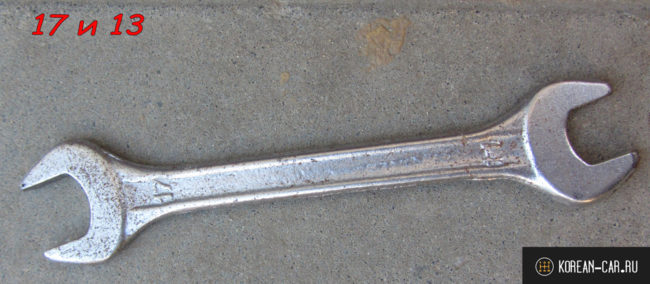

Ключ на 17/14. Понадобится ещё на 13.
Для проведения демонтажа потребуется
Алгоритм замены
- Машину вывесить на домкрате, предварительно сорвав болты с колеса.


Ослабляем болты, пока колесо стоит на земле.
- Снять само колеса и монтировкой и отверткой отжать цилиндр тормоза. Для удобства выполнения процесса рекомендуется сразу вывернуть руль влево или вправо, в зависимости от стороны.
Домкратим колесо.
Для страховки подкладываем колесо под днище.
Утапливаем поршень отверткой.
- С другой стороны суппорта снять или отжать стопорную пластину.


Отгибаем скобу толстой отверткой.
- Ключом на 17 нужно придерживать гайку и открутить рожком на 13 направляющий болт.


Верхний болт удобнее отворачивать торцевой головкой с удлинителем.
- Открыть тормозной суппорт, чтобы достать старые колодки.


Снимаем суппорт и вытаскиваем старые колодки.
- Свести цилиндр до самого конца и вставить новые детали, после чего закрыть его и собрать все в обратной последовательности, перейти на другую сторону авто.
Вставляем новые колодки.
Одеваем скобу и проверяем положение усиков, которые должны упираться в скобу.
При наличии системы ABS нужно учесть особенность. До начала работ следует открутить датчик, чтобы он остался целым при демонтаже. Крепится он 1 винтом
, который откручивается звездой-головкой Е8. Если болты не откручиваются, их нужно предварительно сбрызнуть смазкой WD-40, а через 15 минут пробовать откручивать детали. Она же может использоваться для новой колодки, чтобы было проще вставлять их.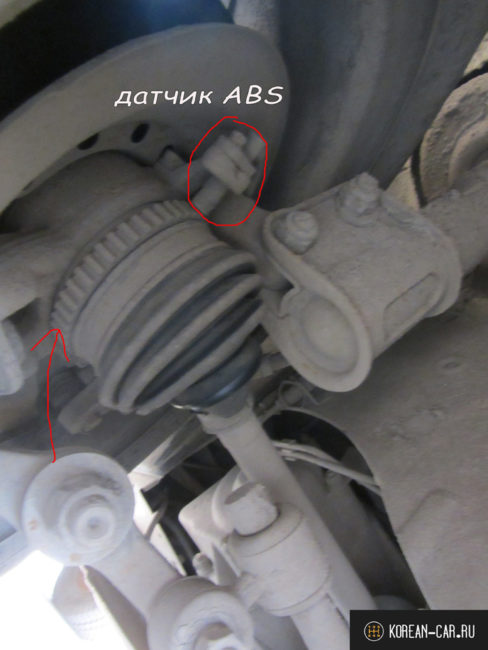

Автомобиль с ABS.
Процедура снятия и установки колодок занимает не более получаса для 1 стороны.
Сразу после установки необходимо прокачать тормоза, нажимая на педаль несколько раз. На протяжении 500-700 км пути пластины будут притираться, поэтому торможение будет хуже.
Рекомендуется перед началом работ убрать тормозную жидкость до минимума. Это необходимо чтобы она не вытекла во время замены, поскольку новые детали всегда толще старых элементов. В таком случае при замене потребуется «
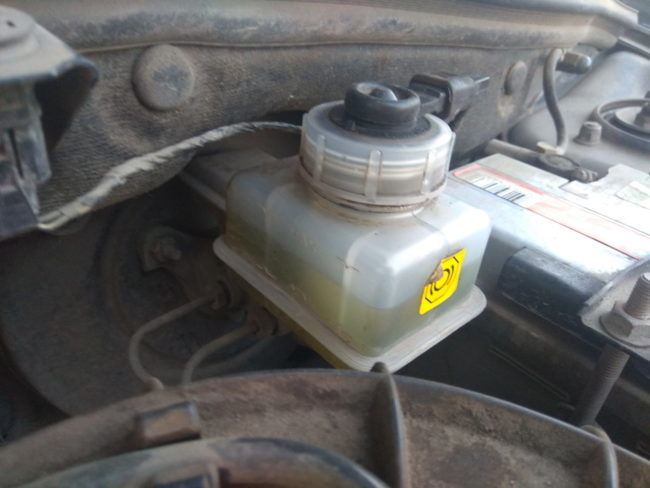

Если тормозуха под крышку – откачиваем шприцом небольшое количество, чтобы жидкость не потекла при сжатии тормозного цилиндра.
Артикулы тормозных колодок
Колодки на первое и второе поколение разные. Варианты без АБС.
Для Калины 1 — 21100-3501080-00 или 21100-3501080-01.
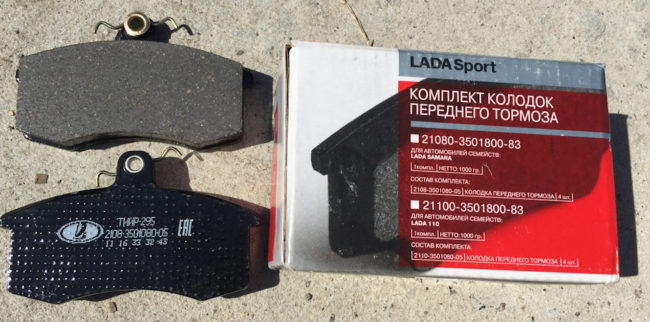

Колодки LADA Sport (ТИИР-295) для Калины первого поколения.
- ATF 142E3946
- AVTOSTANDART 21100350108088
- PILENGA ITALY FD-P 2005
- FORTECH FB-1102F
- TRIALLI PF 965
- KRAFT KT091355
- FINWHALE V210
- BOSCH 0 986 495 214
- LUCAS/TRW GDB1446
- BOSCH 0 986 494 533
Для второго поколения применяют артикул 11180-3501800-83.
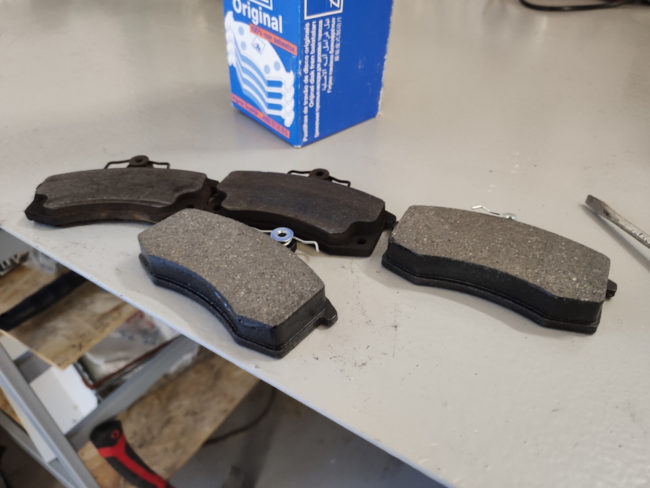

Колодки АТЕ артикул 142E3946 в оригинальной упаковке.
Аналогичные номера используются для Лады Приоры. Владельцами замечено, что с завода используют колодки ТИИР, но они отличаются средним качеством, быстрым износом, а также появлением скрипа во время торможения после нескольких тысяч километров пути.
Когда менять (регламент)
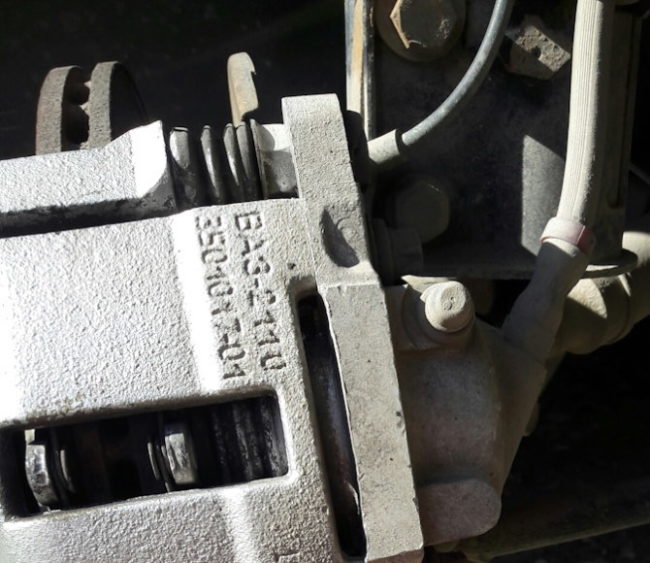

Для контроля износа колодок достаточно заглядывать в смотровое окошко пару раз за год, например, при смене резины.
- Замену передних колодок необходимо проводить в 1.5-2 раза чаще, чем обслуживание задней тормозной системы.
- Точно определить пробег для замены сложно, но в среднем износ наступает через 30-50 тыс. км.
- Для точной диагностики рекомендуется каждые 10-15 тыс. км проверять толщину накладки на колодках.
- Критическое значение – 2 мм и менее.
Подробно о выборе передних колодок мы уже писали.
Тюнинг
Тормозную систему можно доработать, установив колодки спортивного типа марок: Брембо, Ванкс или ПроСпорт.
Однако для проведения такой работы потребуется не только установить новые колодки, но и заменить суппорта, ведь они будут отличаться по размерам от стандарта.
При тюнинге мы рекомендуем использовать мягкие колодки, у которых на 1 мм толще пластины. Они позволяют обеспечить улучшенное торможение, а скорость износа диска будет в несколько раз меньше, однако срок эксплуатации и замену выполнять приходится каждые 15-20 тыс. км.
Особенности замены и причины
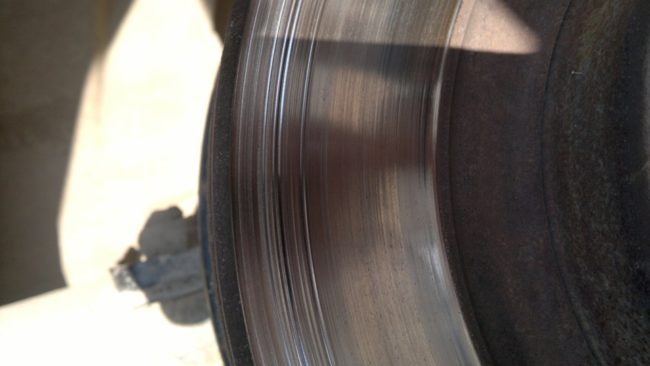

Мы рекомендуем приобретать только качественные расходники. Колодки плохого качества могут приводить к преждевременному износу тормозного диска.
Существует много причин, в результате которых нужно проводить замену.
- Появление скрипа в колесах во время торможения.
- В ходе «рассыхания» основных элементов внутри суппорта, появляется посторонний звук.
- Обязательна смена элементов после покупки подержанного транспорта или проверки их толщины.
- Износ настолько сильный, что остаток пластины менее 2 мм.
- Обязателен осмотр и замена после зимы или 1 раз в год.
- При торможении появляется неравномерный результат остановки автомобиля.
Описанные факторы должны насторожить водителя и привести к потребности диагностики тормозной системы, замены передних колодок.
Покупая автомобиль, будущий владелец обязательно столкнется с необходимостью обслуживания машины, замены расходных материалов, ремонтов. Многие современные водители предпочитают отдать автомобиль в сервис, чтобы там для него провели техническое обслуживание и заменили все что необходимо. Но за такой сервис приходится платить. А если у человека есть необходимый инструмент, тогда любые работы по обслуживанию машины можно выполнить своими руками, даже если необходимо поменять тормозные колодки («Калина»). Замена эта представляет собой простой процесс и не потребует много времени. Давайте рассмотрим, как это сделать.
Когда требуется заменить колодки?
Процесс установки данных элементов на автомобилях серии «Лада Калина» чрезвычайно прост.
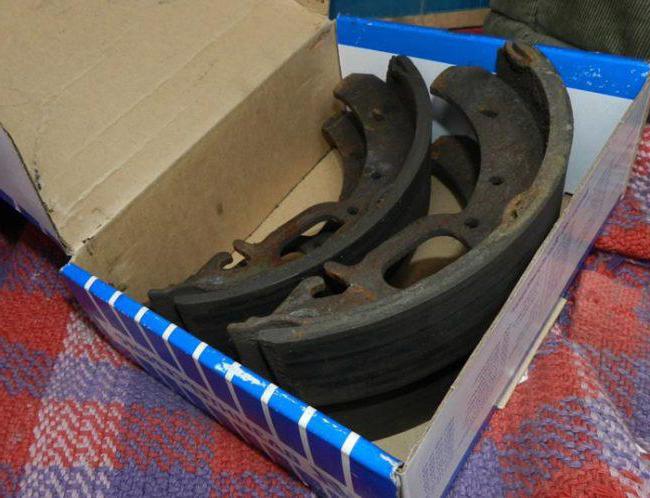 Это актуально для большинства отечественных автомобилей. Но другой вопрос: когда же нужно менять эти расходные материалы? Многие владельцы считают, что замена тормозных колодок на «Калине» (универсал) должна выполнятся практически сразу же после того, как автомобиль куплен и пригнан из салона. Это необходимо из-за того, что большинство моделей, которые сходят с конвейеров отечественных автозаводов, оснащены очень жесткими колодками. Такой элемент негативно влияет на рабочую поверхность диска. Кроме того, это источник противного скрипа приличной громкости. Он неприятен не только для водителя, но и для всех окружающих, когда автомобиль тормозит.
Это актуально для большинства отечественных автомобилей. Но другой вопрос: когда же нужно менять эти расходные материалы? Многие владельцы считают, что замена тормозных колодок на «Калине» (универсал) должна выполнятся практически сразу же после того, как автомобиль куплен и пригнан из салона. Это необходимо из-за того, что большинство моделей, которые сходят с конвейеров отечественных автозаводов, оснащены очень жесткими колодками. Такой элемент негативно влияет на рабочую поверхность диска. Кроме того, это источник противного скрипа приличной громкости. Он неприятен не только для водителя, но и для всех окружающих, когда автомобиль тормозит.Специалисты считают, что замена тормозных колодок (ВАЗ «Калина» в том числе) должна выполняться, если толщина фрикционной накладки составляет менее 1,5 мм. Ездить с такими колодками просто опасно. Есть серьезный риск того, что в один прекрасный момент эффективность торможения станет практически нулевой. Что касается ресурса, то производители указывают от 20 до 40 тыс. км для передних дисковых тормозов и от 60 до 150 тыс. км для задних.
Необходимый инструмент
Для того чтобы поднять автомобиль, снять колесо, а затем удержать тяжелую машину на весу, пока будет выполняться процесс замены, необходим домкрат.
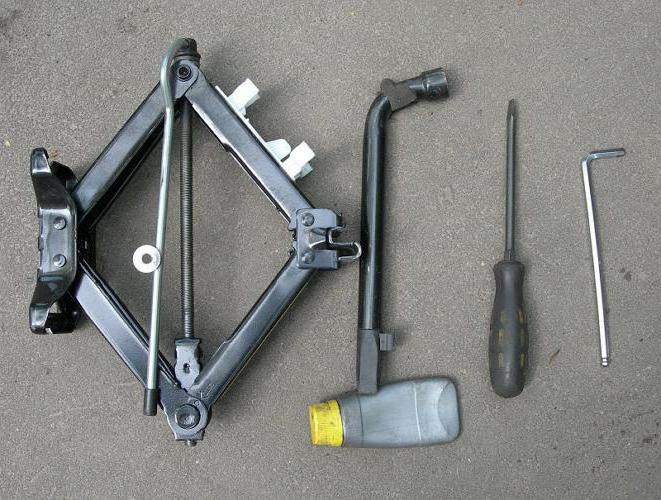 Также для процесса понадобится баллонный ключ, плоская отвертка, плоскогубцы. Дополнительно нужны рожковый и торцевой ключ на 17 и на 13. И еще пригодится струбцина, а также противооткатные упоры.
Также для процесса понадобится баллонный ключ, плоская отвертка, плоскогубцы. Дополнительно нужны рожковый и торцевой ключ на 17 и на 13. И еще пригодится струбцина, а также противооткатные упоры.Важность уровня тормозной жидкости
Прежде чем начать процесс замены, следует обязательно оценить количество данной жидкости. Если уровень ее находится на максимуме, необходимо слить немного при помощи шприца либо груши. Зачем так делать? Это необходимо для того, чтобы в момент отодвигания поршня жидкость не выливалась. Дело в том, что новые колодки значительно толще, чем старые и изношенные.
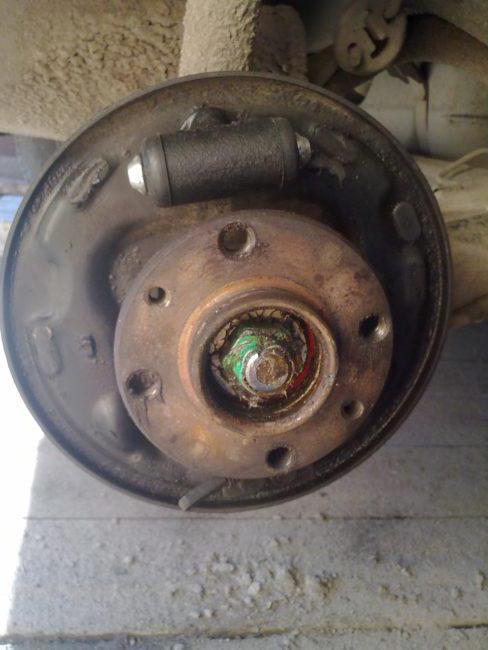 Для хорошего результата нужно оставить в расширительном бачке около половины жидкости.
Для хорошего результата нужно оставить в расширительном бачке около половины жидкости.Этапы работ
Замена передних тормозных колодок на «Калине» (универсал) включает в себя несколько операций. Первым делом ослабляют болты на тех колесах, где проводятся работы. Далее вытягивается стояночный тормоз. При этом под задние колеса «Калины» обязательно подкладывают поры либо кирпичи, чтобы автомобиль не покатился назад. Нужно помнить, что нельзя нажимать на педаль тормоза. Это может спровоцировать выдавливание поршня из тормозных цилиндров.
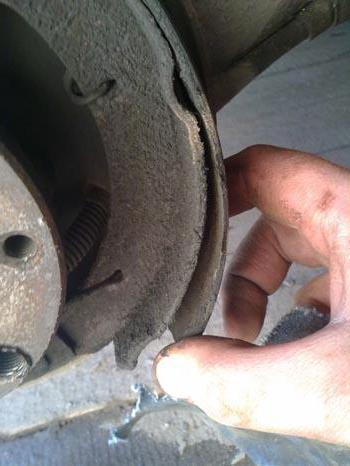 А что насчет владельцев второй модификации авто? Замена передних тормозных колодок на «Калине» 2-го поколения выполняется аналогичным образом, при помощи тех же инструментов. Далее снимают колесо. Для того чтобы немного облегчить этот процесс, руль выкручивают до упора туда, где будет демонтироваться диск. Это делается для того, чтобы обеспечить более комфортный доступ к тормозному механизму. При помощи ключа на 13 отворачивают болт и поднимают суппорт. Далее отверткой и плоскогубцами отгибают стопорную пластину. При этом ключом на 17 удерживают гайку, чтобы она не проворачивалась.
А что насчет владельцев второй модификации авто? Замена передних тормозных колодок на «Калине» 2-го поколения выполняется аналогичным образом, при помощи тех же инструментов. Далее снимают колесо. Для того чтобы немного облегчить этот процесс, руль выкручивают до упора туда, где будет демонтироваться диск. Это делается для того, чтобы обеспечить более комфортный доступ к тормозному механизму. При помощи ключа на 13 отворачивают болт и поднимают суппорт. Далее отверткой и плоскогубцами отгибают стопорную пластину. При этом ключом на 17 удерживают гайку, чтобы она не проворачивалась.Теперь устанавливаются новые тормозные колодки («Калина»). Замена сводится к тому, чтобы утопить поршень. При наличии силы это можно сделать и вручную. Однако лучше всего использовать струбцину. Новые колодки устанавливаются в обратном порядке. Самое главное – не забыть о стопорной пластине. Она защищает от откручивания болта. Аналогичный комплекс операций следует проделать и на втором колесе спереди. После того как будет произведена замена колодок, следует снова проверить, сколько тормозной жидкости осталось в расширительном бачке. При необходимости нужно долить до максимального уровня. Зачастую интенсивному износу подвержены именно передние тормозные колодки («Калина»). Замена задних требуется значительно реже, но если это необходимо, то делается это очень легко.
Что нужно для замены?
Для этой операции понадобится немного другой комплект инструментов. Также нужен баллонный ключ для демонтажа колес. Еще пригодится вороток и головка на 30, глубокая головка на 7, тонкая отвертка с плоским жалом и плоскогубцы.
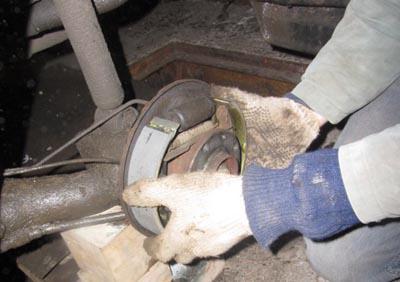 Плоскогубцы могут понадобиться, если не удается демонтировать барабан без обоймы с подшипником. В этом случае сначала отворачивают гайку ступицы, а затем занимаются снятием барабана. На автомобилях “Лада Калина” замена задних тормозных колодок производится в несколько этапов. Рассмотрим ниже, как это сделать.
Плоскогубцы могут понадобиться, если не удается демонтировать барабан без обоймы с подшипником. В этом случае сначала отворачивают гайку ступицы, а затем занимаются снятием барабана. На автомобилях “Лада Калина” замена задних тормозных колодок производится в несколько этапов. Рассмотрим ниже, как это сделать.Как заменить задние элементы своими руками
Автомобиль ставят на передачу, а противооткатные упоры устанавливают уже спереди. Также необходимо упереть одно колесо сзади. Затем машину нужно поднять. Естественно, делается это сзади. Лучше перед подъемом слегка ослабить болты на нужном колесе. Когда оно оторвалось от земли, болты можно отворачивать уже спокойно и уверенно. Затем берется вороток и глубокая головка на 7. С ее помощью отворачиваются шпильки, которые удерживают барабан. После этого можно попробовать снимать тормозной барабан. Чтобы эта операция прошла легче и быстрее, вокруг защитного колпачка брызгают средством WD-40. Когда все откиснет, демонтируем элемент. Можно увидеть весь барабанный тормозной механизм. Далее демонтируется шплинт, это удобнее делать плоскогубцами.
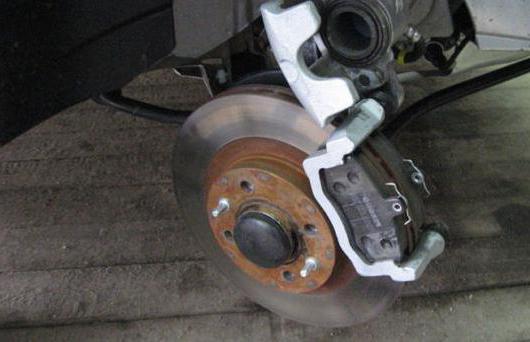 Для того чтобы механизм вытянулся, инструмент проворачивают по часовой стрелке и находят удобное положение для него. Затем с помощью плоскогубцев снимают нижнюю пружину, которая стягивает колодки. Это удобнее делать справа – захватывают и тянут в эту же сторону. Затем снимают фиксирующую колодку в центре короткой пружины. Правая колодка легко вынимается без необходимости демонтажа верхней пружины. Для этого крепко берутся за центр плоскогубцами и отводят ее в сторону. Вместе с этим необходимо поднимать пружину вверх. Пластина под пружиной должна выпасть. Теперь уже ничто не фиксирует задние тормозные колодки.
Для того чтобы механизм вытянулся, инструмент проворачивают по часовой стрелке и находят удобное положение для него. Затем с помощью плоскогубцев снимают нижнюю пружину, которая стягивает колодки. Это удобнее делать справа – захватывают и тянут в эту же сторону. Затем снимают фиксирующую колодку в центре короткой пружины. Правая колодка легко вынимается без необходимости демонтажа верхней пружины. Для этого крепко берутся за центр плоскогубцами и отводят ее в сторону. Вместе с этим необходимо поднимать пружину вверх. Пластина под пружиной должна выпасть. Теперь уже ничто не фиксирует задние тормозные колодки.«Калина» (замена дальше выполняется без необходимости применения инструментов) продолжает стоять на домкрате. Достаточно отсоединить фиксирющую пружину и снять пластину. После можно уверенно демонтировать колодку. Установка новых выполняется в обратном порядке. Что касается времени замены, то процесс займет около часа, если в наличии все необходимые инструменты и приспособления. Замена тормозных колодок «Калина-2» выполняется аналогичным образом. Задние механизмы остались такими же, как и в первой версии.
Какие колодки лучше выбрать?
Марка Ferodo является популярность среди отечественных автовладельцев.
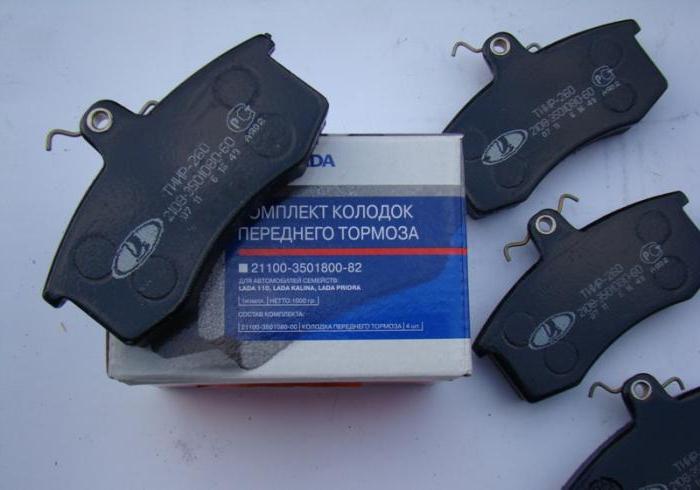 Колодки лучше приобретать в красной либо в зеленой упаковке. Эти элементы отлично и эффективно тормозят даже на высоких скоростях. Колодки от Dafmi отличаются высокой стойкостью к износу, отлично выдерживают экстренные торможения в любых даже самых неблагоприятных погодных условиях. Ресурс небольшой – всего 30 тыс. км. Для тех, кто любит ездить экстремально, подойдет продукция Sangsin. Эта компания предлагает продукцию, которая отличается высоким ресурсом. Данные элементы могут работать даже в условиях экстремальных температур.
Колодки лучше приобретать в красной либо в зеленой упаковке. Эти элементы отлично и эффективно тормозят даже на высоких скоростях. Колодки от Dafmi отличаются высокой стойкостью к износу, отлично выдерживают экстренные торможения в любых даже самых неблагоприятных погодных условиях. Ресурс небольшой – всего 30 тыс. км. Для тех, кто любит ездить экстремально, подойдет продукция Sangsin. Эта компания предлагает продукцию, которая отличается высоким ресурсом. Данные элементы могут работать даже в условиях экстремальных температур.Заключение
К тормозам не стоит относиться безответственно. Необходимо вовремя проверять тормозные колодки. «Калина» (замена, как видите, легко производится своими руками) будет исправно и безопасно ездить ближайшие 25 тысяч км.
Замена передних тормозных колодок на калине
Добро пожаловать!
Передние тормозные колодки – являются важной составляющей тормозного механизма и за очень короткое время (По сравнению с задними колодками) приходят в негодность, всё это связано с тем что при торможении весь вес автомобиля передаётся на его переднюю часть и поэтому передние тормозные колодки подвергаются очень большим нагрузкам, так же они быстро нагревают передние тормозные диски но и остывают по времени тормозные диски тоже относительно быстро (Особенно при езде), вот таким вот образом и работают передние тормозные колодки.
Примечание!
Чтобы сменить колодки на автомобиле, вам придётся запастись: Плоской отвёрткой, а так же зубилом, молотком и набором гаечных ключей в котором быть у вас должны ключи под номером «13» и «17»!
Краткое содержание:
Где находятся передние тормозные колодки?
В каждом автомобиле есть тормозной суппорт (Правда не во всех эти суппорта есть, вот к примеру если брать машины с барабанными тормозами, то там эти суппорта отсутствуют), на каких то он в передней части располагается, а на каких то и в передней и в задней, на АвтоВАЗе машин с задними дисковыми тормозами выпускается очень мало (Но они всё же есть, та же самая калина NFR к примеру), а выпускается мало потому что задние тормоза как мы уже сказали особой роли при торможении не играют, тем более двигатели на наших автомобилях не слишком мощные и барабанные тормоза заднюю часть при торможении тоже на ура удерживают, плюс дисковые тормоза нужно чаще менять и колодки в них тоже требуют частой замены, ко всему этому дисковые тормоза более дорогие в обслуживании в отличие от барабанных и чтобы их установить тоже денег больше нужно и поэтому автомобили в цене возрастут при покупки, а чем больше стоит автомобиль, тем меньше спрос на него (Не богатые люди просто не смогут его уже купить) и поэтому такие тормоза применяются на ВАЗах только в передней части, для наглядности на фото ниже в круг обведён сам тормозной суппорт, а стрелкой показана щёль, в которую если заглянуть, можно будет увидеть тормозные колодки.


Когда нужно менять передние тормозные колодки?
Не сняв и не проверив колодки сказать с точностью что их нужно менять у вас не получиться, потому что как правило когда колодки приходят в негодность, они о себе не сразу дают знать (Только если они совсем не стёрлись до металла, в этом случае тормозить данное колесо на котором стёрлись колодки до металла не будет и будет очень неприятный звук при торможении стоять, как будто металл об металл трётся, вы его сразу услышате), по началу появляется посторонний звук (Скрежет лёгкий) со временем он всё усиливается и усиливается, но и проявляется он только когда автомобиль тормозит, если и у вас все эти симптомы присутствуют, то в таком случае снимайте колесо с автомобиля и через ту самую щель в тормозном суппорте, посмотрите состояние колодок, если вы уже видите что их фрикционная часть (Данная часть указана стрелками) стёрлась и практически дошла до основания на котором она сидит, то в этом случае снимайте колодки и меняйте их на новые, так к слову, фрикционная часть тормозных колодок не должна быть меньше 1.5 мм, это всё линейкой или штангенциркулем измерить можно когда колодки будут сняты с автомобиля, но только именно фрикционную часть меряйте и основание к которому она крепиться вообще не берите в расчёт.
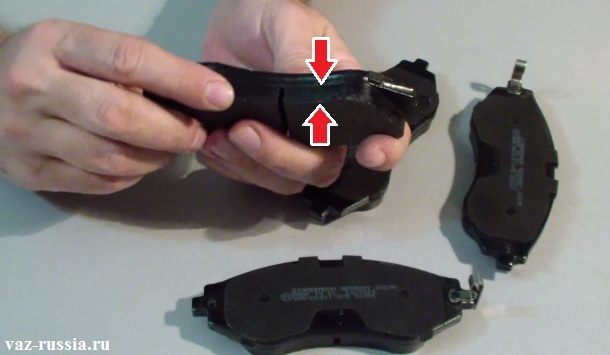

Примечание!
Кроме этого колодки так же меняются если фрикционная накладка у них повреждена, если на ней имеются сколы и трещины, а так же если накладка начала отваливаться от основания к которому она прикреплена, более подробно о том что такое тормозные колодки, где они располагаются и как работают, можете ознакомиться в статье под названием: «Что такое тормозные колодки?»!
Как заменить передние тормозные колодки на ВАЗ 1117-ВАЗ 1119?
Примечание!
Колодки заменяются только комплектом и ни как иначе, то есть если вы собрались спереди колодки менять, то на обоих колёсах все четыре колодки и меняйте, если сзади нужно их сменить, то же самое, на обоих задних колёсах их и меняйте, всё это связано с тем что все колодки разные и какие то сильнее тормозят а какие то слабее и если вы замене колодки только на одном колесе, а на другом будут изношенные и совершенно другой фирмы, то в лучшем случае при торможении у вас автомобиль в бок будет уводить, а в худшем, его в занос будет бросать, потому что одно колесо будет гораздо сильнее тормозить другого!
Снятие:
1) На всех автомобилях которые выпускаются на ВАЗе колодки заменяются практически идентично и разницы особой нет, поэтому если вы научитесь на калине их менять, то и на девятке и на десятки вы тоже сможете эту процедуру проделать, в начале нужно будет снять нужное колесо тем самым чуть-чуть приподняв машину, для безопасности рекомендуем под задние колёса башмаки ещё подложить чтобы автомобиль чётко держался на весу и ручным тормозом машину ещё затормозить нужно (Кстати при замене задних колодок, ручник наоборот должен быть опущен, поэтому на будущее это учтите если задние колодки соберётесь заменять), если вы не умете снимать колесо или просто не знаете как это правильно нужно делать, в таком случае изучите статью: «Правильная замена колёс на автомобилях» и ещё кой что, тормозной бачок проверьте (Он указан стрелкой), а именно посмотрите сколько в нём жидкости налито, если он полностью заполнен, тогда с помощью резиновой груши откачайте от него чуть-чуть жидкости, просто когда вы поршни будете обратно утапливать которые в суппорте находятся, жидкость будет выходить и если тормозной бачок забит будет, то жидкость просто польётся наружу и двигатель запачкает вам.
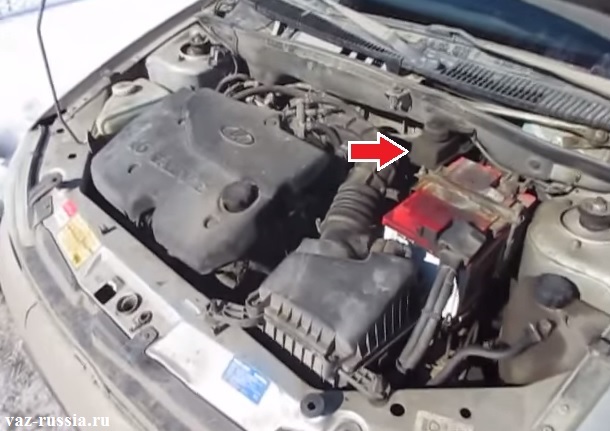

Примечание!
Если жидкость придётся немного собирать при помощи медицинского шприца или резиновой груши, то ещё клемму минус скиньте, а то если жидкость на аккумулятор попадёт, то замыкание будет, о том как скинуть клемму с АКБ, читайте в пункте 1 «вот этой статьи»!
2) Теперь переходим к самой замене, у скобы тормозного суппорта есть болты её крепления, один из болтов вам будет нужно вывернуть, чтобы поднять скобу и снять колодки, но чтобы отвернуть этот нижний болт нужно отогнуть уголок стопорной шайбы которая предотвращает выворачивания этого болта при езде на автомобиле, отогнуть его можно с помощью отвёртки или же зубила (см. фото 1), как только операция проведена, отверните нижний болт придерживая при этом вторым ключом направляющий палец от проворачивания (см. фото 2), далее поднимите скобу у суппорта до упора на самый верх (см. фото 3) и выньте обе тормозные колодки, заменив при этом их на новые, по необходимости проверьте линейкой или же штангенциркулем фрикционные накладки тормозных колодок и при установке новых колодок, всё посадочное место от грязи и ржавчины протрите, при помощи металлической щётки к примеру, но только во время очищения суппорта, пыльник у поршня не порвите, а то менять придётся, в общём делайте всё аккуратно и в завершение, поставьте одну старую тормозную колодку на своё место и закройте суппорт (Болт направляющего пальца заворачивать не нужно), как только колодку установите на место, возьмите толстую отвёртку или небольшую монтировку и использовав их как рычаг, вдавите поршень во внутрь тормозного суппорта, поршень нужно вдавливать чтобы новые колодки установились, просто новые они по толще будут и если поршень не вдавить, то при установки колодки просто в него упираться будут, после завершения операции, выньте старые колодки и установите на их место новые.


Примечание!
Перед тем как скобу суппорта поднимать, тормозной шланг выньте из кронштейна в том месте которое стрелкой на фото ниже показано, таким образом вы обезопасите его и он при поднятии скобы не порвётся!
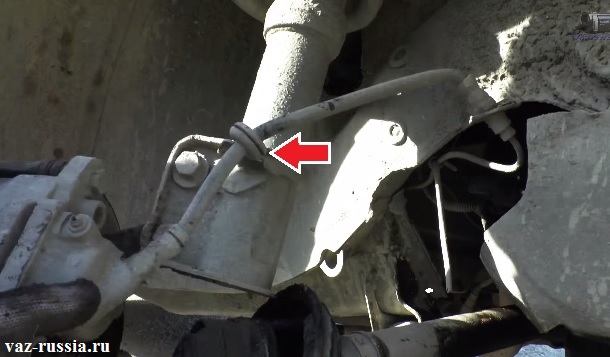

Установка:
Устанавливаются новые колодки в обратном порядке снятию, при установке проследите за тем чтобы нажимные пружины параллельно самим колодкам были установлены как это на фото ниже показано (Пружины указаны стрелками), а так же когда закрутите болт направляющего пальца (Кстати палец придерживать другим гаечным ключом не забудьте, а то он вместе с болтом проворачиваться будет), загните тот самый усик стопорной шайбы который вы ранее отгибали зубилом или отвёрткой, загибать его нужно таким образом, чтобы болт отвернуться не мог, в общём разберётесь, просто головой подумайте немного, в завершение когда всё будет уже закончено, сядьте в машину и несколько раз на тормоз нажмите, ещё проверьте уровень тормозной жидкости в бачке и если будет нужно до доведите его до нормы и всё на этом.
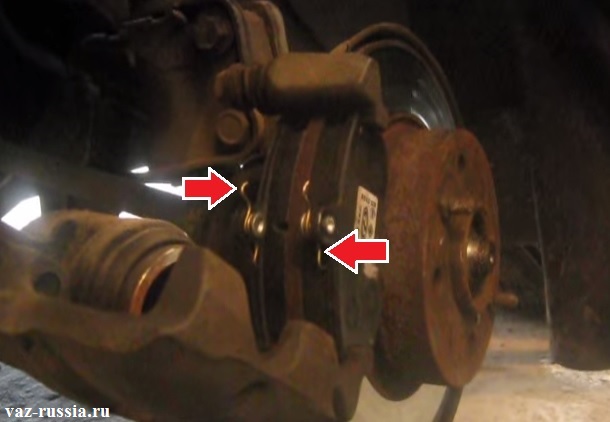

Дополнительный видео-ролик:
Увидеть наглядно каким образом колодки заменяются на автомобиле, вы можете в видео-ролике ниже, в котором пример замены показывается на автомобиле Лада Калина 2.

